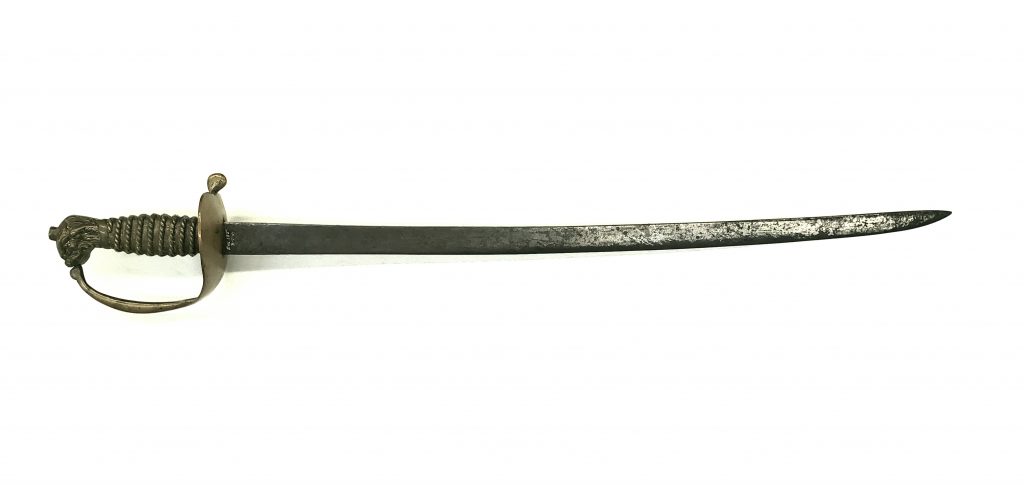Brass hilted monster head hangers were in use with the British army from at least the mid-to-late 17th century. Sometimes they are fairly crude cast-brass and some with a little more discernable detail. By the mid-18th century, they seem to be quite similar in form. A cast-brass hilt and counterguard with a knuckle bow and occasionally a branch, what looks like twisted rope around the grip, and an impressive pommel that looks like a monster’s head. When issued out they sometimes were engraved with regiment and rack numbers on the counter-guard to identify the soldier to whom it belonged. These markings add to the collector value and history especially if marked to a regiment that fought in North America.

Before the American Revolution, battalion companies turned in their swords, but they were still carried by the grenadier company of a regiment. Not all regiments used the same form of sword, and it was up to the colonel to choose a pattern. My favorite British martial sword is the cast brass monster head. It just has a certain look to it and when worn with the entire grenadier uniform it helps add to the impressive look of the soldier.
One of these beautiful swords is in the collection of the Concord Museum and it’s provenance states it was picked up on April 19, 1775. It is in very good condition and marked on the counter-guard to the 10th Regiment of Foot. The expedition to Concord on that fateful morning was led by Lieutenant Colonel Francis Smith, commander of the 10th Regiment, and along with him came his light infantry and grenadier companies. The sword was probably carried by a member of the 10th Regiment’s grenadier company who after they arrived in Concord were ordered to hold the South Bridge and search homes in the area for warlike supplies being stockpiled in the town by the Provincial Congress. After the fight at the North bridge which included the light infantry company of the 10th Regiment and searching out and destroying what supplies they could find, British forces left Concord for their return to Boston. As they reached Meriam’s Corner, about a mile outside of town, they were attacked by Provincial minute and militiamen. This was the start of heavy fighting that grew worse as the day went on. We don’t know who carried the sword or where it was lost that day but it is a great survivor of the expedition to Concord and the start of the American Revolution.






